Fox history…
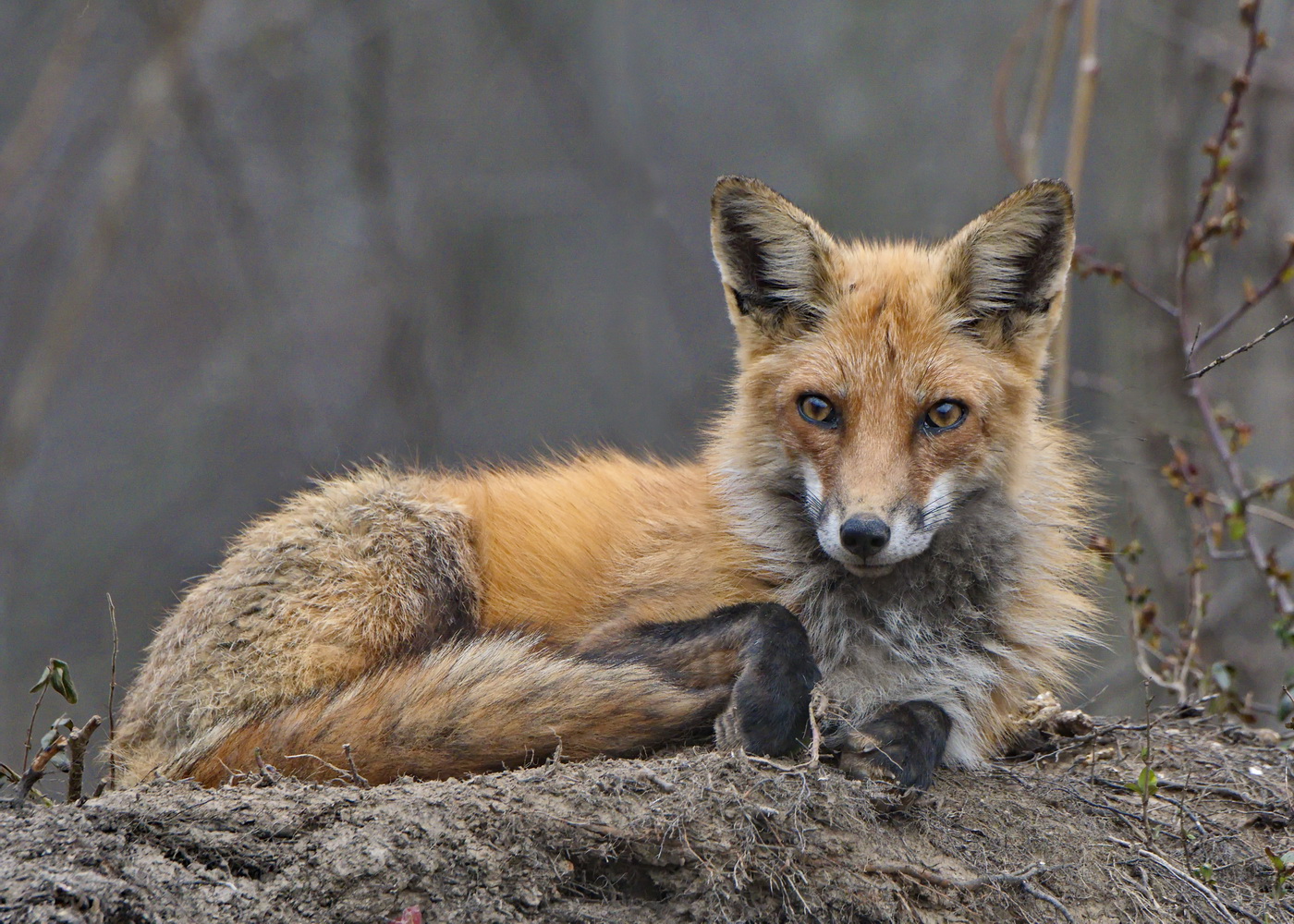
My earliest days as a wildlife photographer in the mid-Atlantic were spent shooting birds and the occasional raccoon, but it didn’t take me long to become enamored of red foxes. I sought them for several months, never getting more than the blurred back end of one as he bolted into the woods or a grainy shot taken well after sunset…until one evening when I passed what I thought was a dead fox lying sprawled on her side atop the root ball of a downed tree. I continued on, mentally raging against rat poison, which I judged to be the most likely cause of death for a fox out in the open with no sign of injury. I turned back around, though, to follow a great blue heron I’d seen fly across the lake, and I found the dead red fox alive and well, still perched upon that root ball. I’m not sure why she felt so comfortable with me…possibly due to of the facts that we were separated by water and she was above me because I was down in a creek bed. Regardless, I spent a good 20 minutes with her before she started to look sleepy and I moved on so she could get some rest without having to keep an eye on me.
Thus a love affair began.

That spring I heard from a neighbor that there were baby foxes nearby. I followed the lead she gave me, and sure enough, there they were! I was smitten.
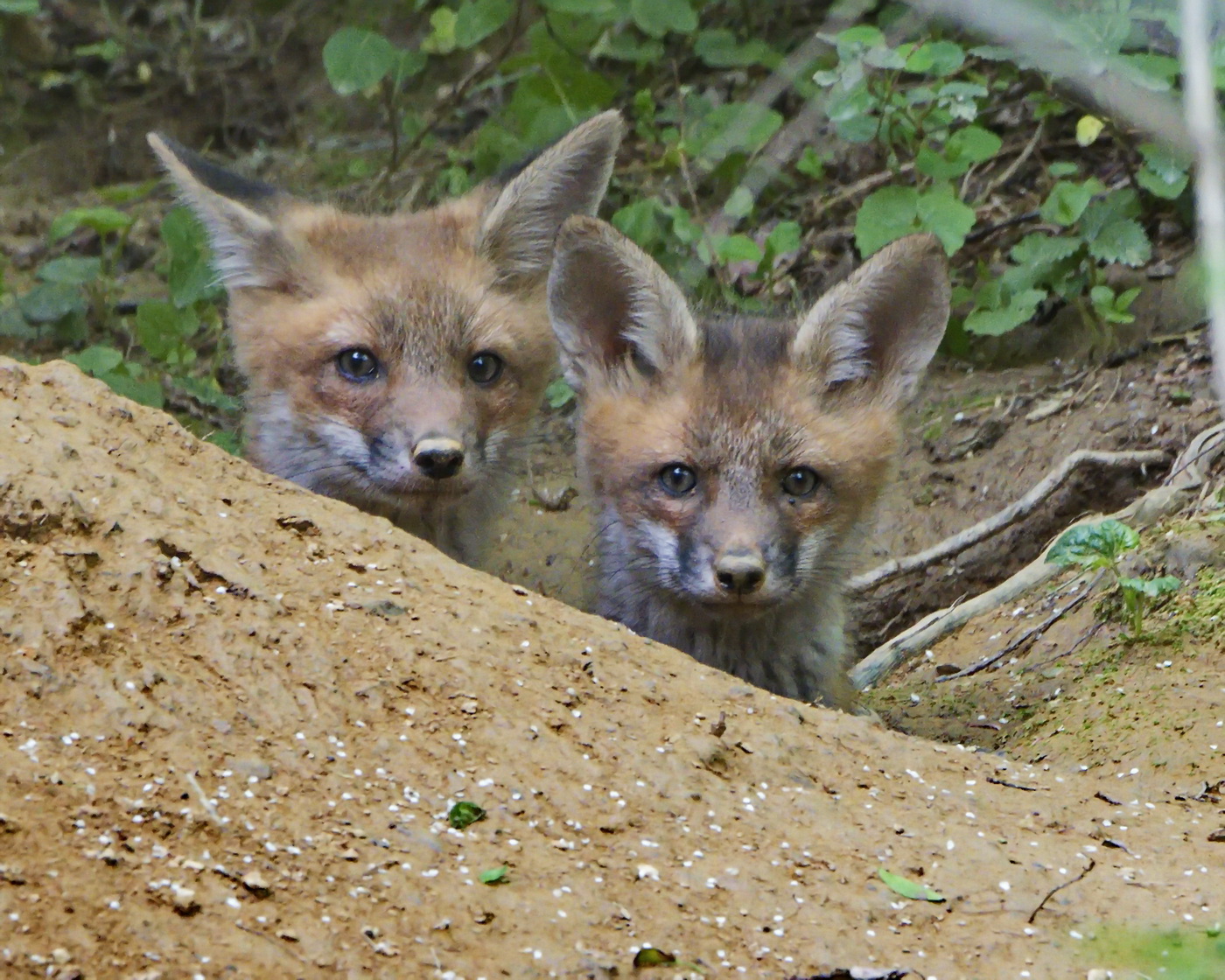
Several months later I discovered a patch of woods near a neighborhood lake, and after a little while I realized it was the opposite side of the woods where I saw that first fox den. As I explored the area very thoroughly I discovered what I thought might be several other den sites, but I didn’t know for sure what they were. A male fox lived in those woods, and after a few weeks he stopped hiding himself when I visited. I got to know him well, watching him hunt, groom, patrol his territory, and sleep. I heard but never saw his mate. One day I came across a fox carcass, definitely dead this time, with no apparent sign of injury. I knew it wasn’t “my” male fox because I’d seen him, so I thought it might be his mate, and I resigned myself to not getting a second chance to photograph kits.
Imagine my surprise then, when one afternoon in early May I looked up at the edge of the creek bank — I seem to spend a lot of time in creek beds! — and saw this:

Either my friend’s mate hadn’t died, or he’d found another one and stashed her away in a den before I could catch a glimpse of her! I eventually discovered that there were three kits, and I was privileged to spend several (non-consecutive) hours photographing them. If mom was keeping the kits, she would send them back into the den at my approach, but when dad was in charge he let them stay out as long as I didn’t get too close.
My friend was an excellent dad. He played with his kits, fed them, and groomed them. (This baby seems to think his ears are plenty clean already!)
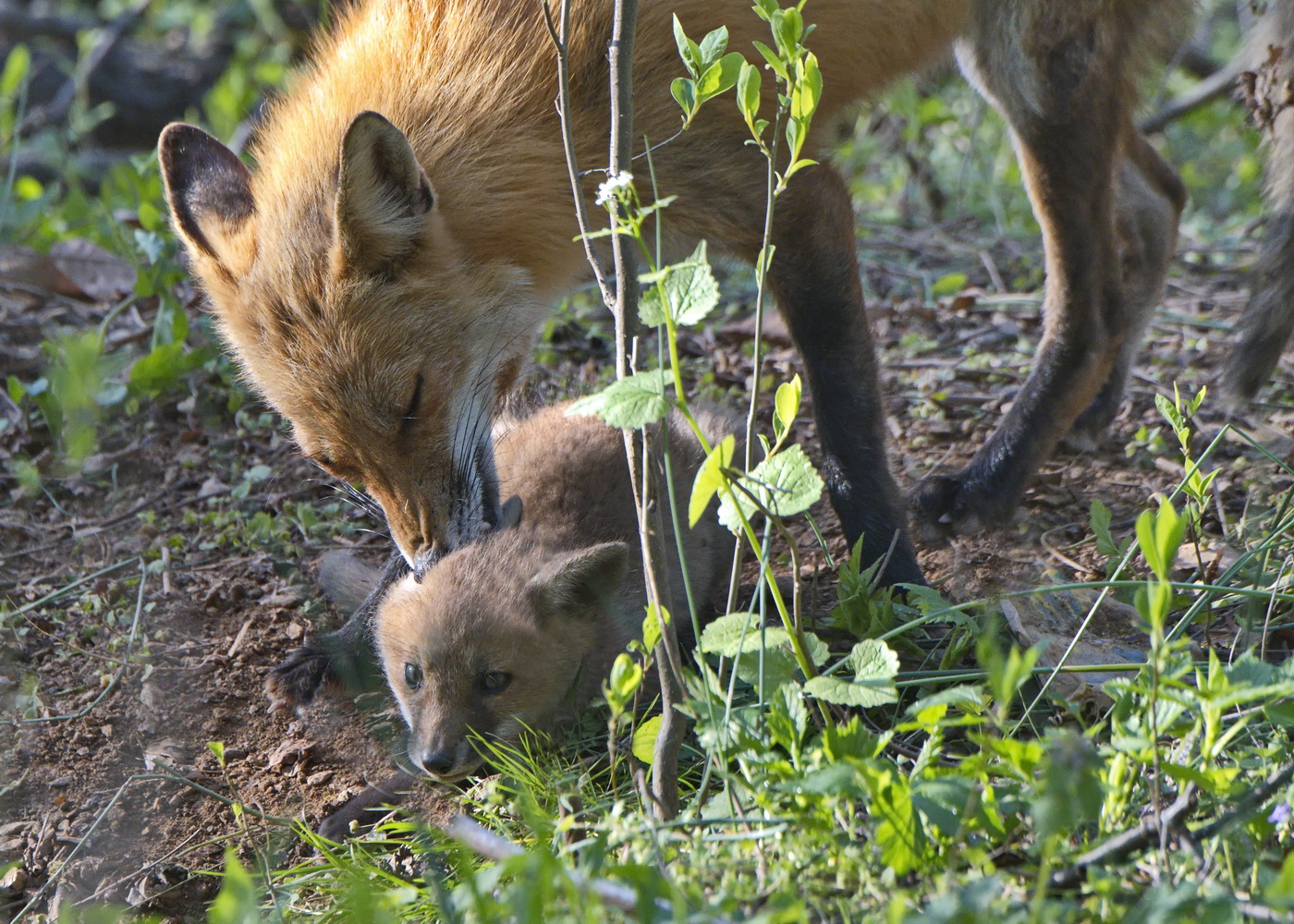
He also played with them, and his patience was inspiring. Once one of the kits sat on his head! I don’t mean they were wrestling and he accidentally ended up on top of his dad. I mean he deliberately walked over and plopped his fanny right on top of his dad’s head…and dad just waited him out with a tolerant grin.
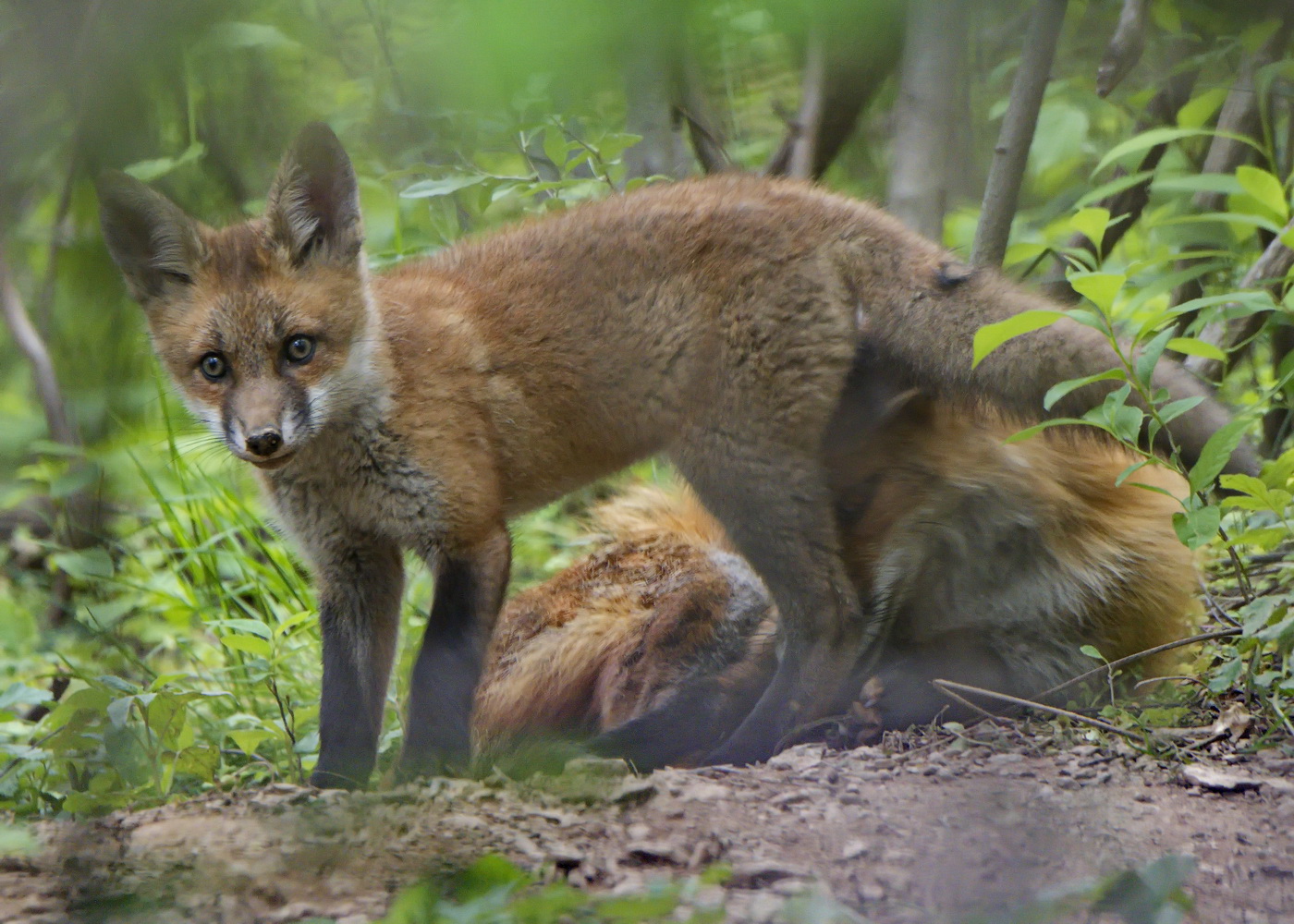
It was a pleasure to watch those little guys grow and explore.
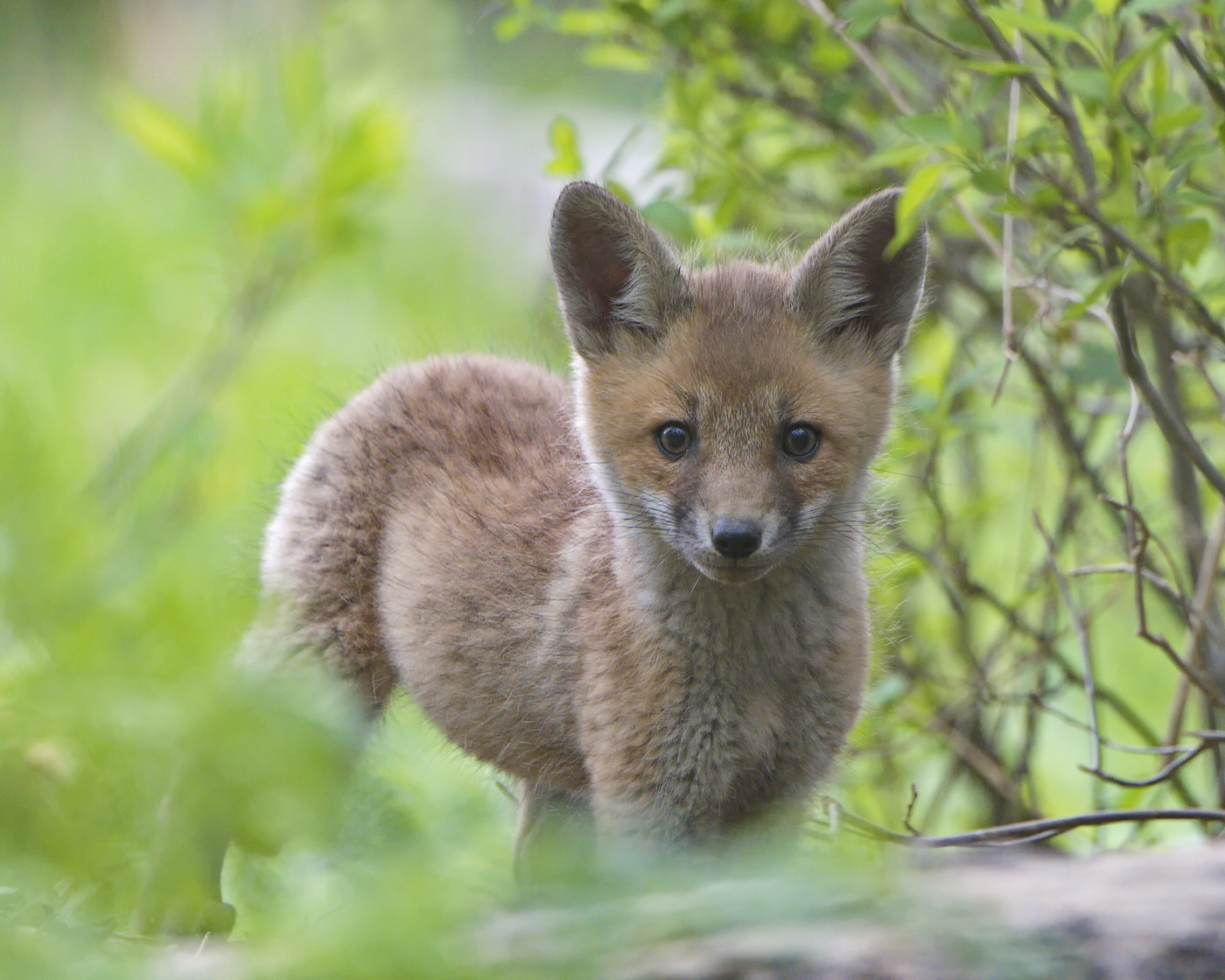
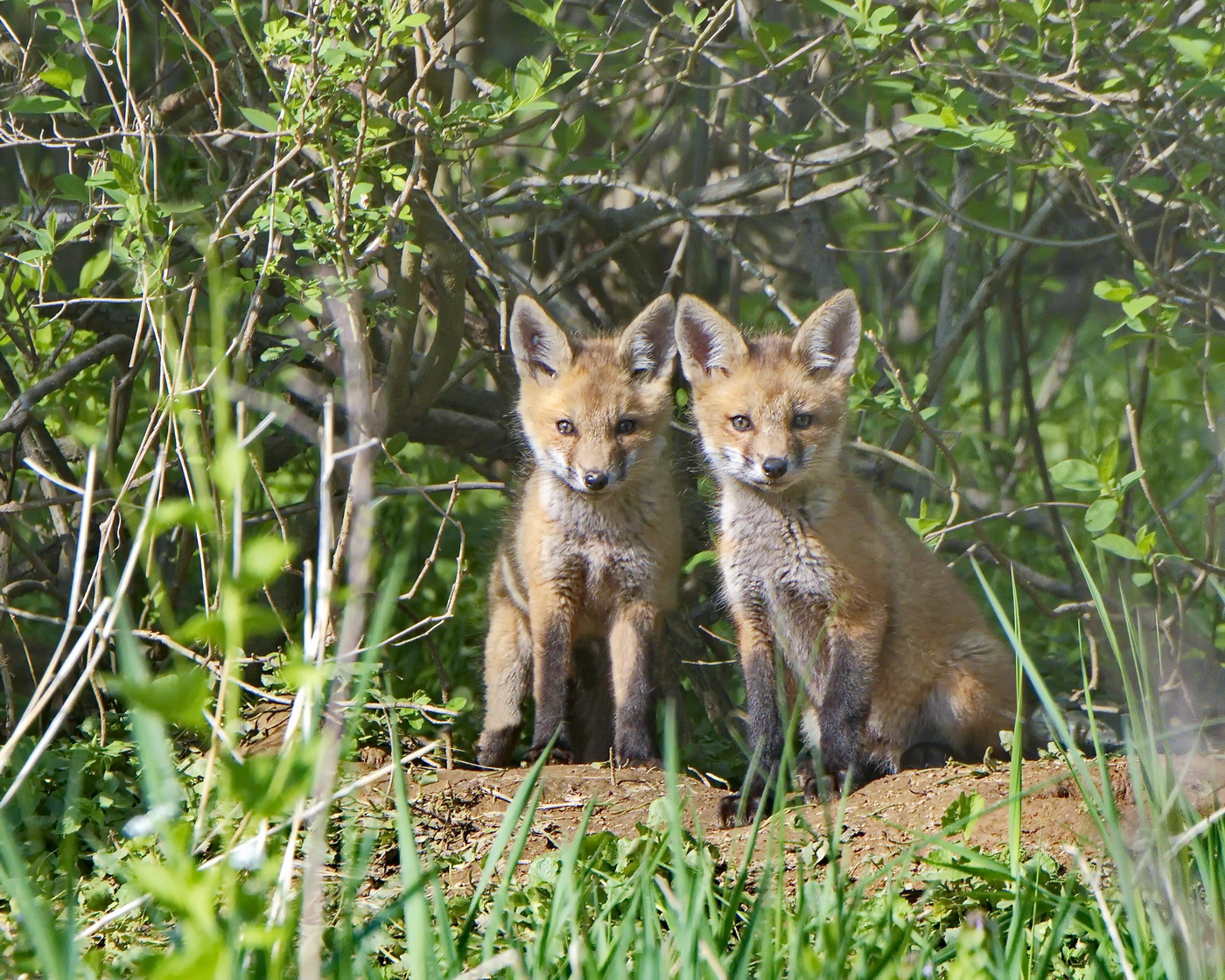
Every morning should be so lovely…
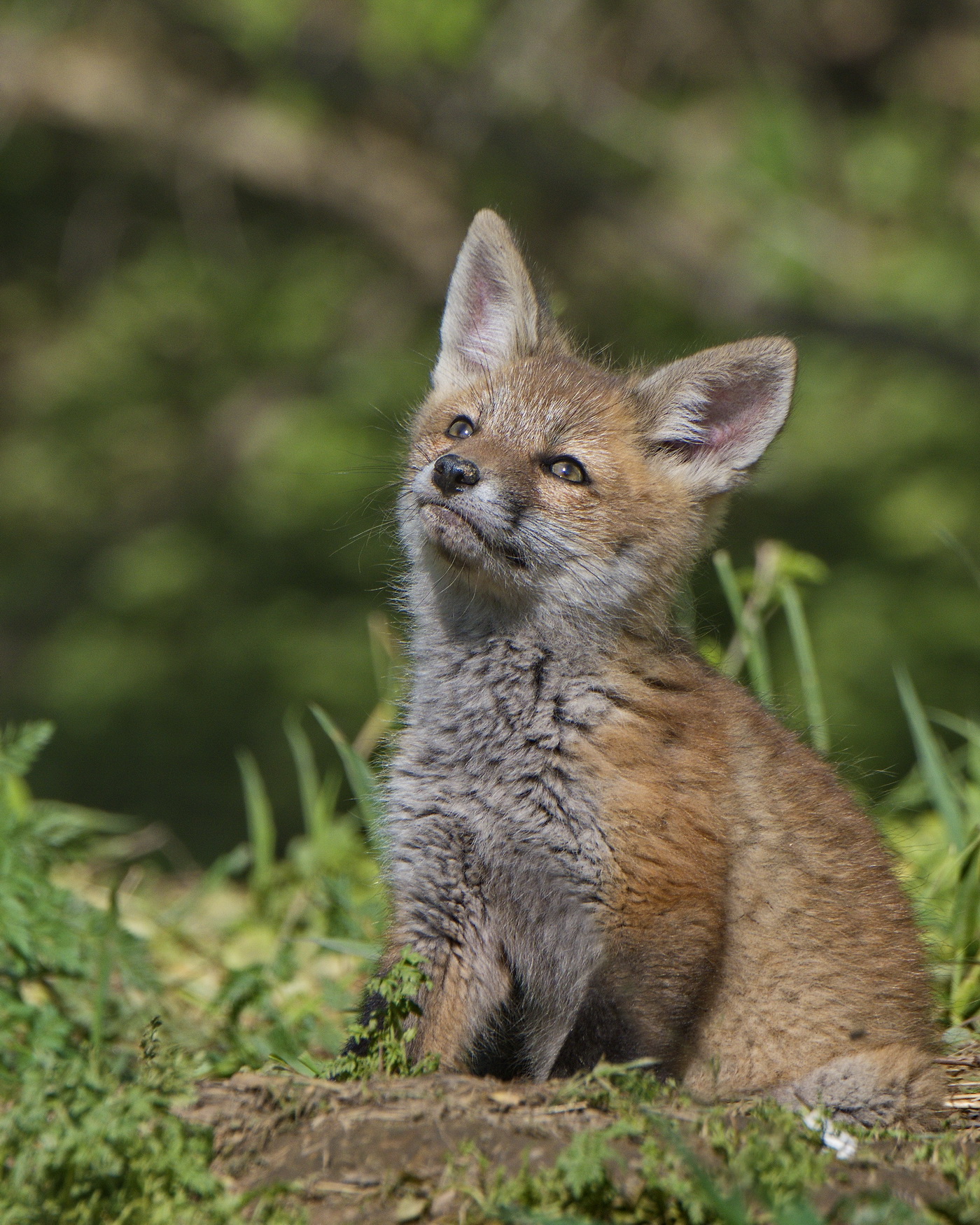
The kits grew up and by autumn had dispersed. I continued to spend time with their father in the woods throughout the winter and into the following spring. The second litter of kits I photographed were born in a different den than the first, although I was by now convinced that they had the same father. I was more confident that what I thought might be den sites actually were, and my friend had a good system of them. I wonder how long he’d been living in these woods before I met him…
The next spring I knew to keep an eye out for kits. I monitored the dens closely but didn’t see any sign that they were being used. Eventually, I caught a faint smell that suggested a den was active. The next day, I met this roly poly fella.
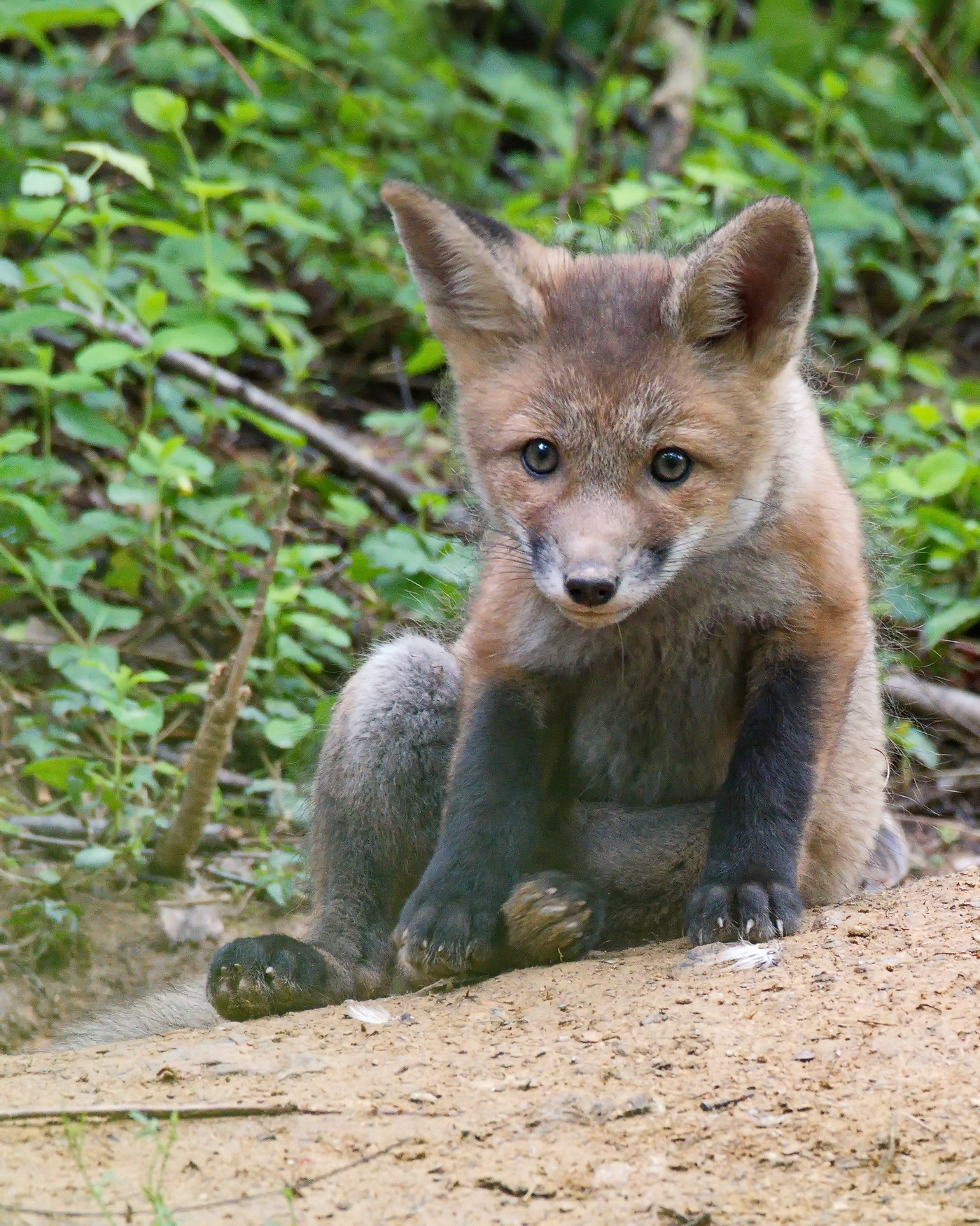
This was in May, 2019, and I was getting ready to begin a whirlwind wildlife photography tour that took up my entire summer without a break, so I didn’t get to spend much time with these kits. I hope they grew up whole and healthy and have gone off to seek their own fortunes. I returned to the woods a couple of times in early September after I got back, but the grasses get about chest-high in that area during the summer, so even if a fox had been standing three feet from me, I wouldn’t have seen it. I’m sad to say that I neglected my woods for the rest of the fall because of some things that happened involving my “day” job as a psychology professor that kept me utterly swamped for the fall semester. Finally, winter break arrived, and I couldn’t wait to get back into my woods and spend time my old friend. I never did.
The very first time I went back into the woods that winter, I saw several black vultures in a group near an old snag. It could have been any dead animal they were feeding on…deer, rabbit, raccoon, groundhog…but somehow I knew it would be a fox, and my heart sank. It was. It had been scavenged to such a degree that I couldn’t identify it as an individual, but I think it might have been “my” fox. I was too devastated to look closely the first time, so I went back the next day to see if I might be able to tell who it was. My old friend had been hit by a car at some point before I met him, and that old injury was reflected in his posture, so I thought I might be able to know if it were him by observing the skeletal remains, but the carcass was gone when I got there.
It’s always a little tricky when you get to know a wild animal because the truth is that wild animals don’t live long lives, and they often die in brutal ways. Red foxes live an average of three years in the wild, and my friend was at least four (and maybe older.) I knew from the beginning that if I tracked him long enough I would eventually grieve him one way or another. I don’t know for sure that he’s gone, but I’ve been back to the woods many times since December and haven’t seen him even once. I miss him.
And now it’s spring once again. If my old friend is gone, then someone else will almost certainly move into his territory. I haven’t seen or heard a single fox in that area, though, so I’ve been wondering if the dens might go unused this year. Except…
…a week or two ago I saw a single track that I thought might be fox. And then a single pile of scat that might be fox. But that’s it. I’ve monitored the dens regularly and haven’t seen any signs of use…until last week. And that has led to a tracking mystery…
(Part 2 coming soon)

